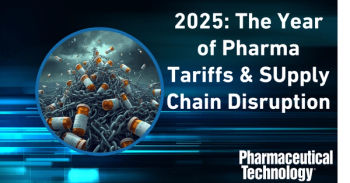
- Pharmaceutical Technology-07-02-2014
- Volume 38
- Issue 7
Brazil's Phytotherapic Drug Market and Regulation
Is there potential for growth in Brazil's phytotherapic drug market?
It is well known that Brazil has an immense biodiversity and that the Amazon is the largest tropical rainforest in the world. Traditional Brazilian medicines include African elements, rooted on indigenous groups. Few pharmaceutical companies, however, know at what level phytotherapic drugs are commercialized in the country, how much regulation is imposed for herbal medicines, and if there are any opportunities in this unspoken, mysterious market in Brazil.
Dozens of studies link Brazil’s herbal medicines to successful treatments and cures of various ailments. According to Japanese scientists, there is strong anticancer activity in certain Brazilian traditional medicines (e.g., basic and applied studies for physiological activities of Brazilian traditional medicine). Another study analyzed antifungal properties of plants used in Brazilian traditional medicine against clinically relevant fungal pathogens. One more study made a comparison between ethnopharmacology in traditional Chinese medicine and Brazilian popular phytotherapy.
One would suppose that due to the potential of the market, there would be dozens of companies investing in the sector. This potential, however, is not translating into market growth, according to industry sources.
So why is the herbal drugs market in Brazil almost completely undiscovered and profoundly undeveloped? Is there any real potential for new or existing companies to enter this market?
There are few figures available on the local herbal drugs market, and its evolution is not officially followed, according to the Brazilian Health Surveillance Agency (Anvisa). It appears that most of the investment in the Brazilian herbal market has come from the cosmetics sector and not directly from the pharmaceutical industry.
A December 2011 study conducted by the University of São Paulo concluded that the number of patents filed at the Brazilian patent bank (76 patents) was much lower than that observed in its American (279) and European (328) counterparts and did not show clear signs of growth (1). The study was based on Brazilian, European, and American patent banks, with the objective of evaluating herbal extracts applied in cosmetics.
Alexandros Botsaris, president of the Brazilian Phytotherapy Association (Abfit), stated in an interview with Pharmaceutical Technology that there are various barriers in Brazil related to registration, environmental legislation, and local production of raw materials, which end up slowing down the availability of quality products in the local market. “Without a proper supply of products, no market is able to grow consistently,” said Botsaris.
Anvisa has imposed regulation processes that include the registration of herbal medicines, according to Abfit.
“However, Anvisa was excessively strict regarding safety and efficacy criteria, which caused many smaller laboratories that produced traditional products to shut down,” said Botsaris, adding that was the main reason why the volume of herbal drugs available in the local market reduced significantly in the past 15 years.
Botsaris adds that another issue is which products should be named “phytotherapic”, as the term could include herbal extracts, ‘in natura’ products, or even items sold though network/pyramid marketing. “Brazil’s herbal industry is in a very early stage if compared with other developed countries,” says Botsaris. Brazil tends to follow guidelines published in the US, which could influence the Brazilian herbal market in the long term, he adds.
Also, according to Botsaris, environmental legislation made the use of Brazilian biodiversity extracts on commercialized products or research more complicated. “The CeGen (Cultural and Genetics Heritage Council) aggressively fined researchers and companies that invested in plants considered of Brazilian heritage, which has greatly inhibited the production of herbal medicines made with Brazilian plants,” said Botsaris.
Legislation
According to Ana Cecília Carvalho, phytotherapic coordinator for the Brazilian Health Surveillance Agency (Anvisa), difficulties in the production of herbal remedies may arise due to legislation, which may not be changed by Anvisa. According to Carvalho, there are new norms being edited aiming at meeting other points not foreseen by the Brazilian Law to harmonize the legislation with international standards of quality, safety, and efficacy control.
“We hope these changes will make it possible for more herbal remedies to be available in the market and [guarantee] that every product will meet current international quality standards,” Carvalho told Pharmaceutical Technology.
The local legislation for herbal drugs has evolved since 1967 in a few aspects to level itself a little more with international standards. In the past eight years, Brazil expanded its regulation principles regarding raw materials and created its good practice rules and other specific rules for herbal remedies to standardize the sector.
Since then, Anvisa updated and re-edited rules such as the Guideline to Herbal Medicine Registration (Director’s Collegiate Resolution [RDC] 14/10) and the Good Manufacturing Practices Guideline (RDC 17/10), among others. “This is the fifth time the Herbal Medicine Registration is being re-edited ... the last version was RDC 14/2010,” said Carvalho.
According to Carvalho, one of the main changes to the rules is related to the splitting of herbal products into two classes: one that passes all clinical studies needed for the new drugs registration to be granted and another for lower-risks products. “Lower-risk products do not need complete testing,” she said, adding that the data from more than 30 years of usage on human beings is considered.
According to Carvalho, this makes approval of lower-risk herbal drugs a quicker process, with follow-up control by Anvisa itself. “The legislation update is needed in order to make sure that the consumer understands how the product purchased was registered … if it was through standardized clinical trials or safe and effective usage, which is not clear today,” said Carvalho.
To re-edit the rules, Anvisa analyzed various points of the international legislation from the World Health Organization (WHO), European Community, Canada, and Australia and extracted “the best” safety, efficacy, and quality principals from each, Carvalho said. According to Anvisa, various associations, scientists, and communities participated in the process.
Botsaris, however, states that Abfit was not happy with the process. “We have sent various suggestions to Anvisa and never had any idea actually used by them. We currently do not feel any type of proximity with the agency,” he said.
“Abfit favors legislation and market systems similar to the ones found in Europe, where the government is active in validating traditional products, while there is also more flexibility for registration and prescription of [herbal] products,” Botsaris added.
Growth and opportunities
Brazil’s pharmaceutical market has grown in the past years as the volume of products available increased and new products emerged, especially those that were patent-protected, according to Abfit data. The association estimates, however, that the herbal drugs market has not followed the same trend. According to Abfit, the number of new registrations dropped by 50% at Anvisa in the past 14 years.
Anvisa also confirmed to Pharmaceutical Technology that there has been a reduction in the number of registered herbal drugs from manufacturers. “However, we have no means to offer [comparative] information on whether [the drop] was related with herbal drugs sales or financial values as Anvisa does not follow herbal drug sales and finances [/figures],” said Carvalho.
Despite the lack of statistics, it is possible to notice that the growth of herbal medicines in Brazil did not follow the evolution of the regular pharma market. On the other hand, according to Botsaris, Brazil historically follows international trends in this sector, and the search for natural drugs is increasing locally and worldwide so there are various good reasons to believe that the herbal industry in Brazil will offer great opportunities ahead and should receive more investments in the years to come.
Reference
1. W. Magalhães et al., “Patenting in the Cosmetic Sector: Study of the use of herbal extracts,” Brazilian Journal of Pharma. Sciences, 47 (4), University of São Paulo (October/December 2011).
About the Author
Hellen Berger is a business news correspondent based in São Paulo, Brazil.
Articles in this issue
over 11 years ago
Trends in Manufacturing and Equipmentover 11 years ago
The Mainstreaming of Continuous Flow API Synthesisover 11 years ago
Health Systems Raise the Bar on Reimbursing New Drugsover 11 years ago
Data Integrityover 11 years ago
Environmental Monitoring System Improves Efficiencyover 11 years ago
Automating Online Sampling of Bioprocessesover 11 years ago
Sieve Shakers Ensure Reliabilityover 11 years ago
Laboratory Filter-Dryer Enables ScalabilityNewsletter
Get the essential updates shaping the future of pharma manufacturing and compliance—subscribe today to Pharmaceutical Technology and never miss a breakthrough.




